The jungle, a realm of untamed beauty and danger, is home to a diverse array of predators armed with instincts and adaptations that make them masters of stealth. These creatures have perfected the art of the ambush, striking with astounding speed and precision. Whether you’re an adventurer or a documentary enthusiast, understanding these predators offers a glimpse into a world where survival hinges on the ability to move faster than the blink of an eye. Here are 14 jungle predators that exemplify nature’s most effective hunters.
1. Jaguar: The Silent Stalker
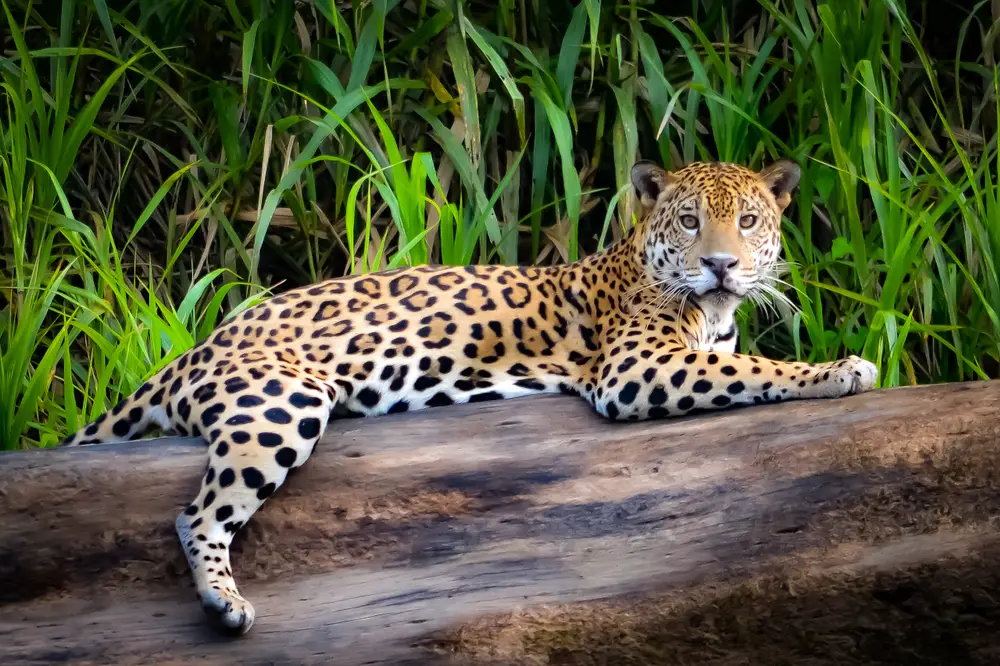
In the dappled light of the rainforest, the jaguar prowls with an elegance that belies its lethal capability. You may not spot it immediately, but rest assured, its eyes are already on you. Known for its incredibly powerful bite, the jaguar is capable of crushing skulls with ease, dispatching prey in an instant. Unlike other big cats, it often prefers to attack from a concealed position, utilizing its strong stealth skills to get as close as possible before pouncing.
According to a study published in the Journal of Mammalogy, jaguars have adapted to thrive in dense forests where visibility is limited. This environment has honed their ability to move quietly, relying on acute hearing and sight to locate prey even under thick canopy. For people venturing into these territories, the jaguar represents both a symbol of the jungle’s ferocity and its mystery. Observing them in their natural habitat is a reminder of nature’s balance of beauty and brutality.
2. Harpy Eagle: The Aerial Assassin
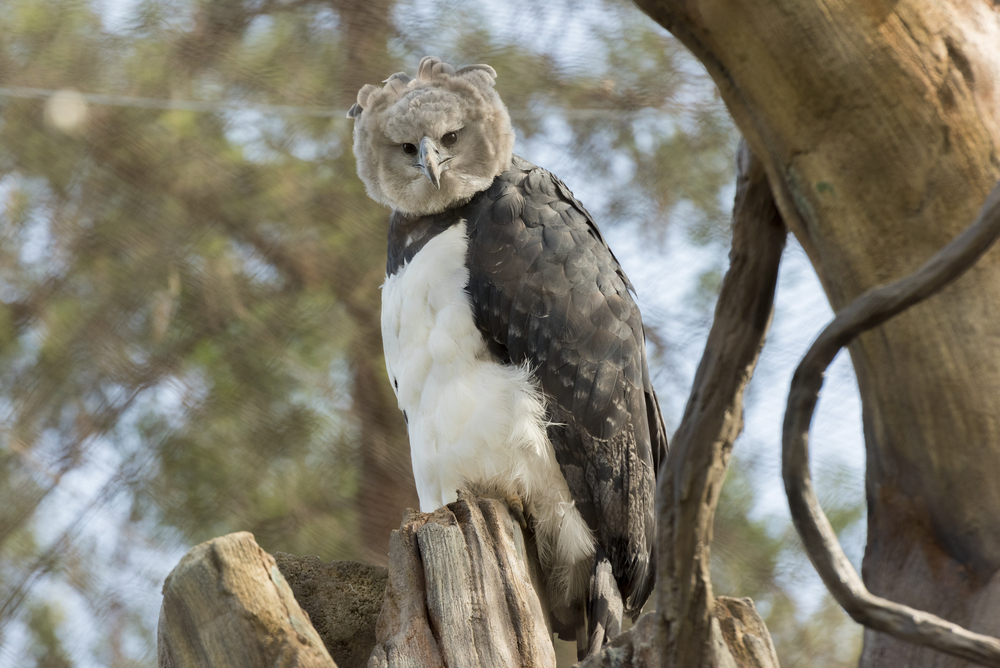
The harpy eagle glides silently above the jungle canopy, its keen eyesight scanning for the slightest movement below. With talons as large as a grizzly bear’s claws, this bird of prey can snatch monkeys and sloths from the treetops in a split second. Its wings, adapted for maneuverability rather than speed, allow it to navigate through dense foliage with precision. You might hear the rush of air as it dives, but by then, it’s already too late for its target.
While it’s a creature of the air, the harpy eagle’s role in the ecosystem is grounded in its ability to regulate populations of arboreal mammals. Its presence is a signal of a healthy forest ecosystem, as these birds require large territories to thrive. For the people living near its habitat, the harpy eagle is both a neighbor and a symbol of the untouched wilderness. Spotting one is a rare treat, offering a glimpse into the life of one of the jungle’s most powerful predators.
3. Green Anaconda: The Ambush Constrictor
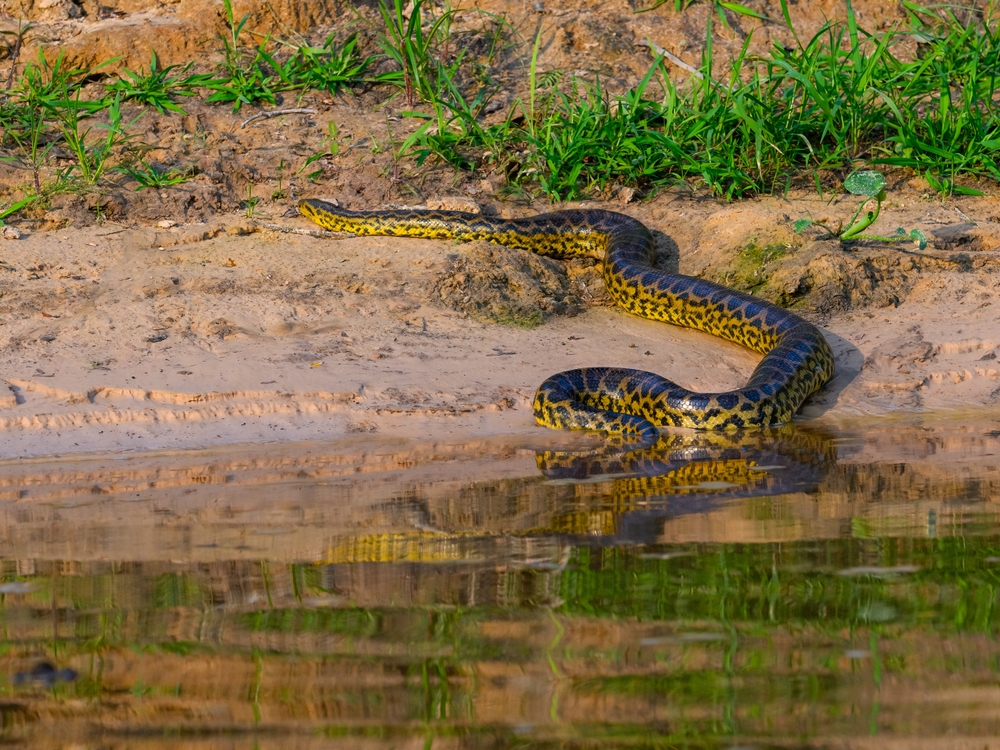
Lurking beneath the murky waters of the Amazon, the green anaconda waits with patient menace for unsuspecting prey. This massive serpent is one of the world’s largest snakes, capable of growing over 20 feet long. With its eyes and nostrils positioned on top of its head, it remains nearly invisible to those above the waterline. The anaconda’s strength lies in its ability to silently coil around its prey, employing a lethal embrace that leaves no room for escape.
A study in the journal Nature Communications highlights the anaconda’s role in its ecosystem as a top predator. It helps control the populations of various aquatic and terrestrial animals, including capybaras and caimans. For you, encountering an anaconda in the wild might evoke both fear and fascination. These snakes embody the jungle’s undercurrent of danger, reminding us of the unseen power lurking just beneath the surface.
4. Poison Dart Frog: The Toxic Gauntlet
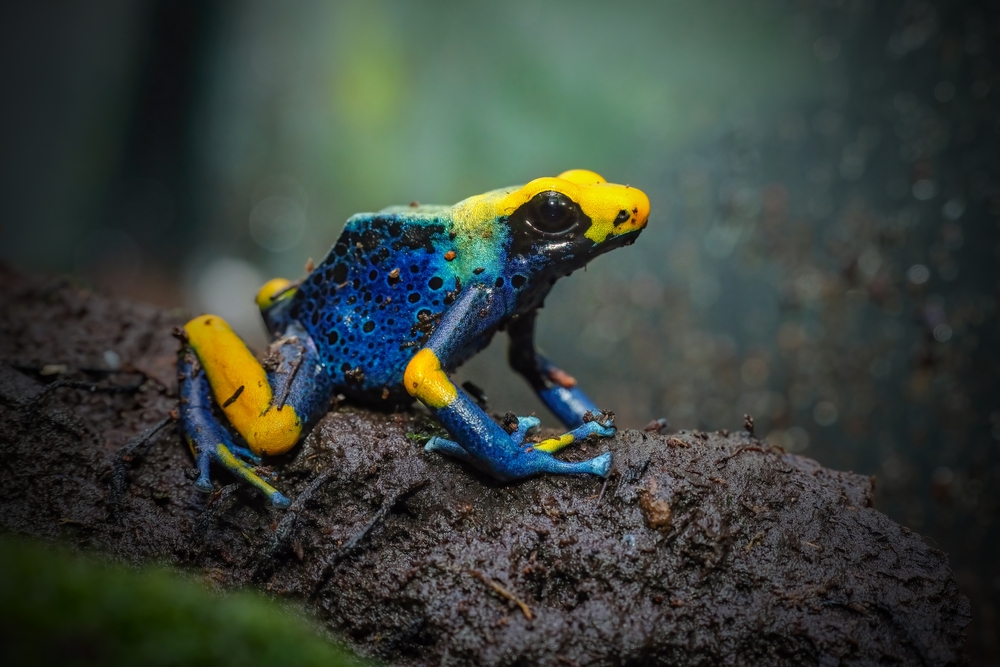
In the vibrant landscape of the rainforest floor, the poison dart frog’s bright colors serve as a warning: approach at your own peril. Though tiny in size, these amphibians pack a potent punch with their toxic skin secretions. Their poison has been used by indigenous people to coat the tips of blow darts, making them effective hunting tools. For predators, even a small dose of this toxin can be lethal, making the poison dart frog one of the jungle’s most feared creatures.
The poison dart frog’s vivid hues are an example of aposematism, a natural defense strategy that deters predators through visual warning signals. These frogs are a testament to the fact that size doesn’t always correlate with influence in the animal kingdom. For humans, they represent the incredible biochemical arsenal that nature has developed over millennia. Encountering one is a reminder of the delicate balance in the jungle, where beauty often comes with a hidden cost.
5. Black Caiman: The River Sentinel
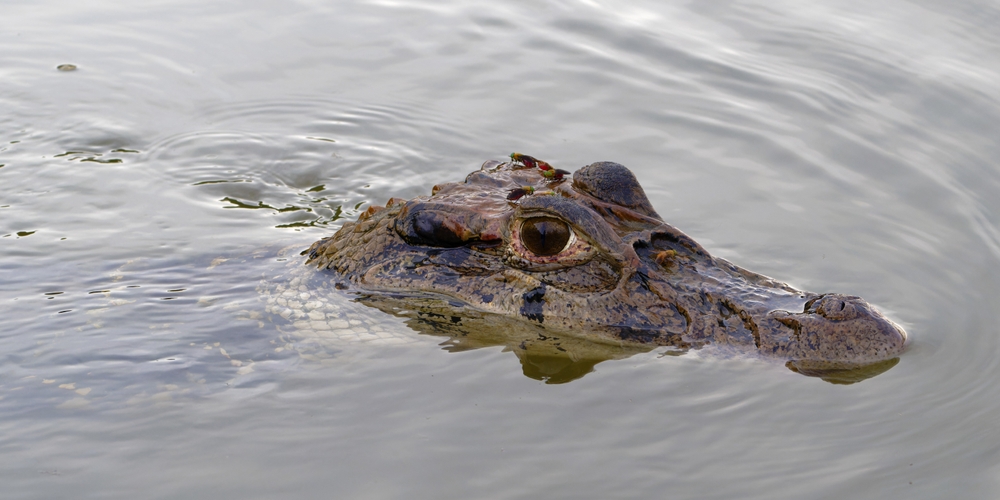
Resembling a prehistoric relic, the black caiman glides silently through the Amazon’s waterways, its eyes barely breaking the surface. This apex predator is the largest species of caiman, reaching lengths of up to 20 feet. With its powerful jaws and formidable speed in water, it can catch almost anything that wanders too close to the water’s edge. A sudden lunge snaps the tranquility of the river, and in seconds, the caiman’s meal is secured.
Research from the Smithsonian Tropical Research Institute underscores the black caiman’s role as a keystone species. By preying on fish, birds, and even mammals, it helps to maintain the ecological balance of its environment. For the people living near these waters, the black caiman is both a respected and feared neighbor, embodying the raw, untamed power of the jungle. Observing one from a safe distance is a humbling experience, highlighting the primal forces at play in these ancient ecosystems.
6. Bullet Ant: The Painful Ambusher
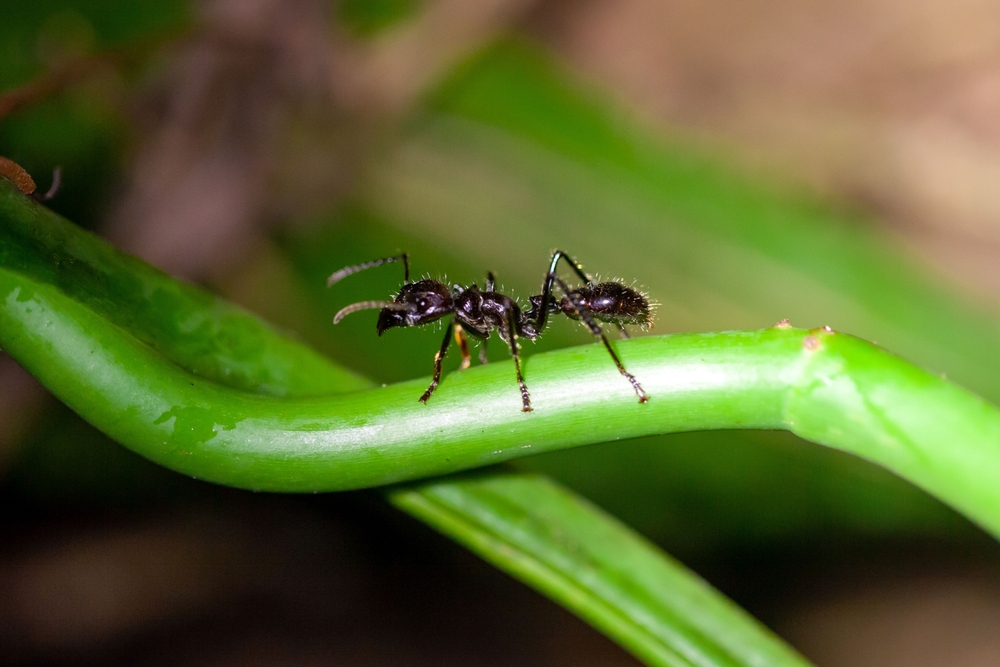
In the towering trees of the rainforest, the bullet ant lurks, small yet formidable. Known for delivering the most painful sting of any insect, it patrols the forest floor and canopy in search of food. Its venom is a potent cocktail that can incapacitate its prey, and for humans, its sting feels like being shot — hence the name. You might not see them at first, but a single step out of place can lead to an unforgettable encounter.
The bullet ant’s painful sting serves as a defense mechanism, deterring would-be predators from making a meal of them. Despite their size, they play a crucial role in their ecosystem as both predator and prey, contributing to the rainforest’s complex food web. For you, the bullet ant represents nature’s reminder that even the smallest creatures can command respect. Keeping a watchful eye and appreciating the ant’s role in the ecosystem helps underscore the importance of every organism, no matter how small.
7. Tarantula Hawk Wasp: The Paralyzing Predator
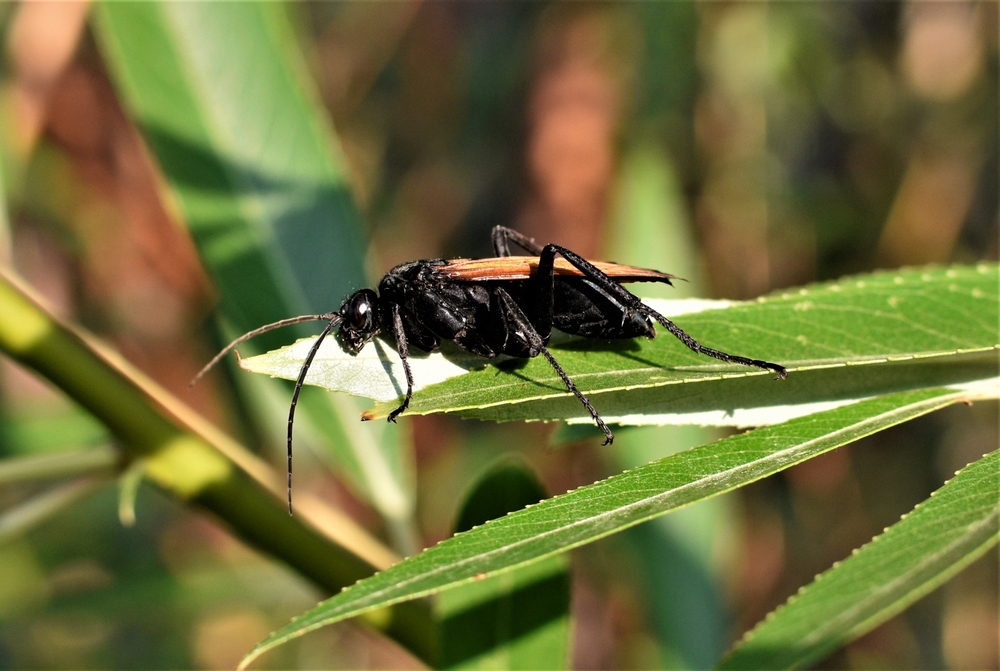
With iridescent wings and a steel-blue body, the tarantula hawk wasp cuts an imposing figure as it hunts its namesake prey. This insect is a nightmare for tarantulas, delivering a sting that paralyzes but doesn’t kill, ensuring fresh food for the wasp’s larvae. You might marvel at its beauty, but getting too close could mean experiencing one of the most painful stings known to humans. It’s a stark reminder of the jungle’s intricate web of predator-prey relationships.
A study from the University of Utah sheds light on the tarantula hawk wasp’s unique hunting strategy and its role in controlling spider populations. By targeting tarantulas, these wasps help maintain the balance among arthropod communities in the jungle. For those who venture into their domain, the tarantula hawk wasp is a symbol of both the jungle’s beauty and its latent danger. Observing them offers a glimpse into the specialized and often brutal interactions that define life in the rainforest.
8. Ocelot: The Nighttime Hunter
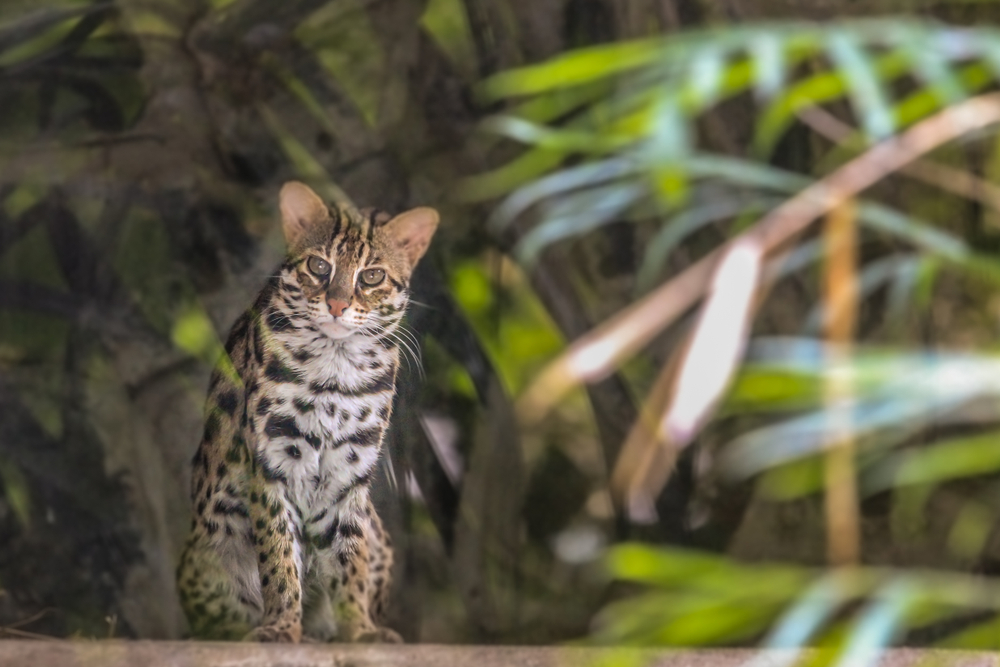
Under the cover of darkness, the ocelot prowls the jungle floor with unmatched agility and stealth. These sleek felines are adept climbers, often using the trees for cover as they stalk prey. Their nocturnal nature and keen senses make them effective hunters, swiftly dispatching small mammals and birds. If you’re lucky enough to spot an ocelot, you’ll be struck by its striking coat and the fluid grace of its movements.
The ocelot’s solitary nature requires it to be a master of stealth, as it often hunts alone in the dense underbrush of the forest. Its diet consists of a variety of animals, helping to control populations of rodents and other small creatures. For you, the ocelot’s enigmatic presence is a reminder of the many secrets the jungle holds after the sun sets. Watching one in its natural habitat is a rare gift, offering insight into the life of one of the jungle’s most elusive predators.
9. Electric Eel: The Shocking Predator
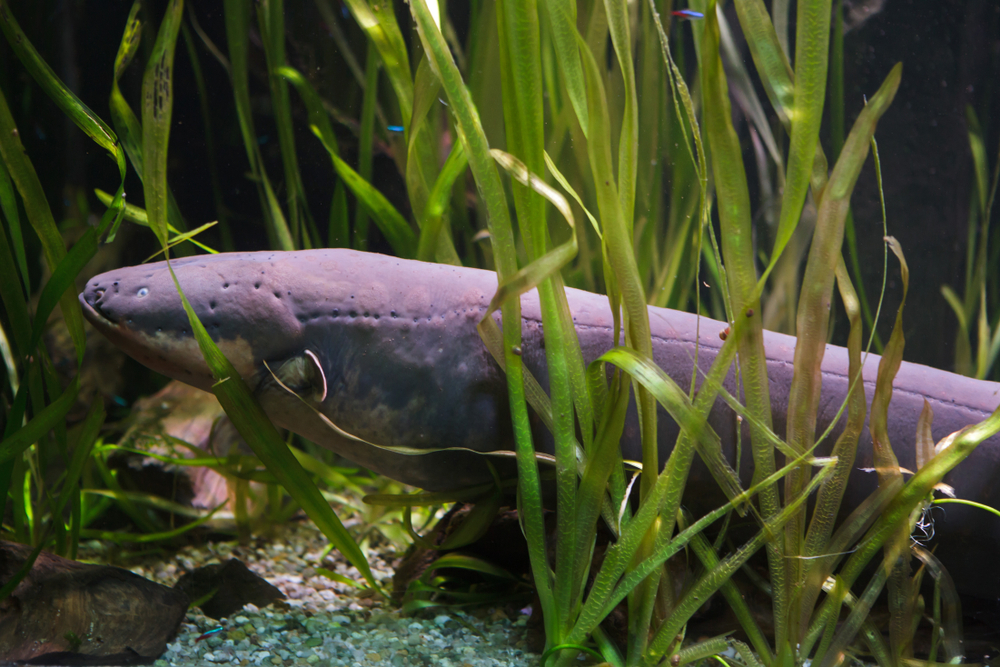
In the murky waters of the Amazon, the electric eel waits, a living battery ready to unleash its charge. Capable of producing shocks up to 600 volts, this predator uses electricity to stun its prey before moving in for the kill. While technically a type of knifefish, its long, snakelike body allows it to navigate through the water with ease. You might not see it coming, but once it strikes, you’ll know — and so will its unfortunate victim.
The electric eel’s ability to generate electricity has fascinated scientists, leading to studies on bioelectricity and potential applications for human technology. By discharging electricity, it not only captures prey but also uses its electric field to navigate and communicate. For those exploring the Amazon’s rivers, the electric eel serves as a reminder of nature’s ingenuity and the surprising adaptations that have evolved over time. Encountering one is both a thrill and a cautionary tale about the power of the natural world.
10. Bushmaster Snake: The Silent Striker
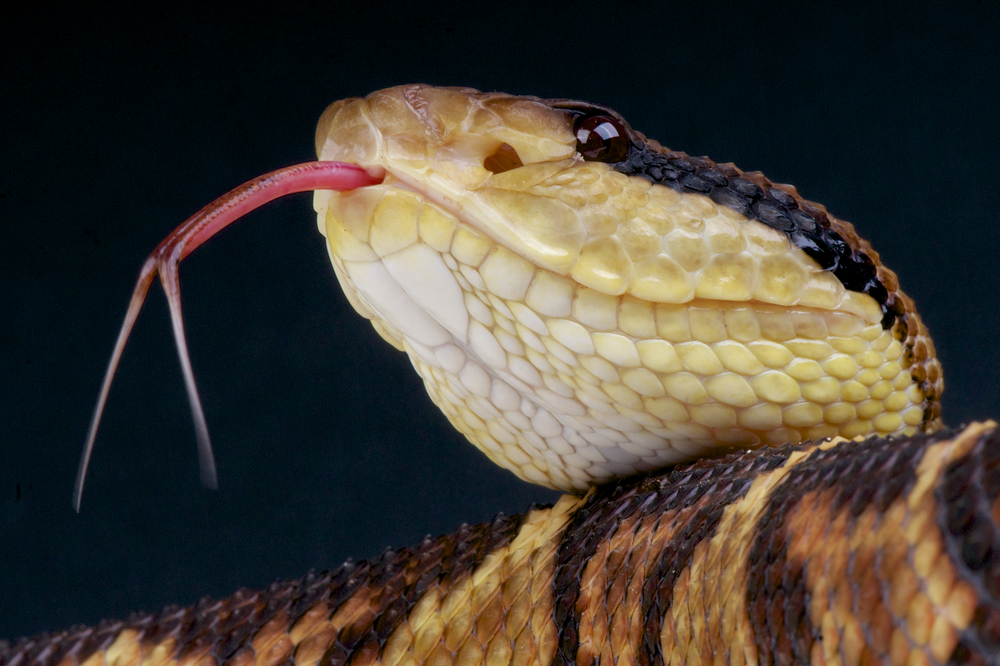
In the dim undergrowth, the bushmaster snake lies coiled, blending seamlessly into the forest floor. As the largest pit viper in the world, it possesses a potent venom that can incapacitate its prey swiftly. Using heat-sensing pits, it detects the faintest warmth of a passing animal, delivering a precise, deadly strike. You might pass by without noticing it, but the bushmaster’s presence is a constant, silent threat in the jungle.
Despite its fearsome reputation, the bushmaster is a reclusive predator, avoiding human contact whenever possible. Its role in the ecosystem is vital, controlling populations of rodents and other small mammals. For you, the bushmaster embodies the jungle’s duality of beauty and danger, a reminder of the hidden perils that lie beneath the forest’s surface. Respecting its space and understanding its ecological role can lead to a greater appreciation of the delicate balance within the jungle.
11. Spectacled Caiman: The Opportunistic Predator
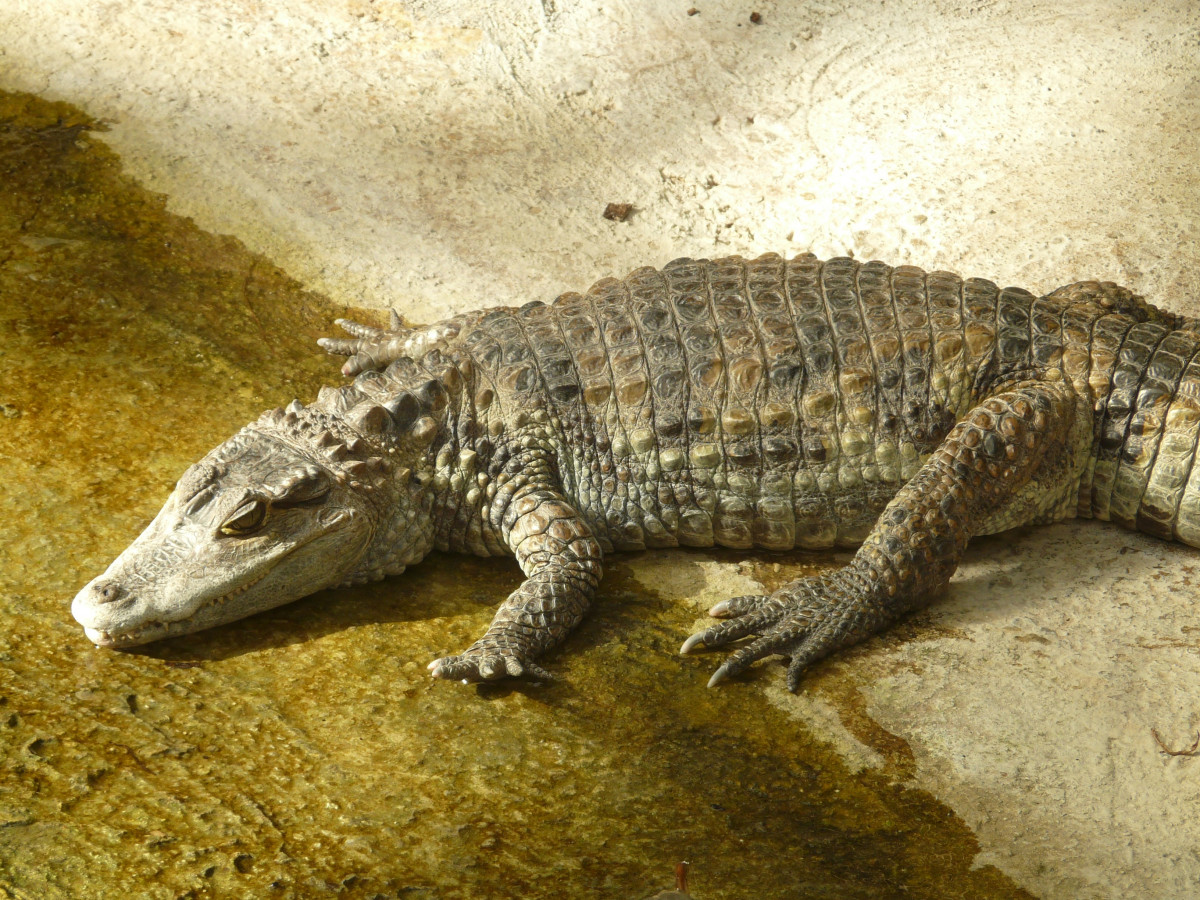
With a watchful eye, the spectacled caiman lurks in the waterways, waiting for the perfect moment to strike. These reptiles are smaller than their cousins, the black caimans, but they are no less formidable. Expert swimmers and ambush hunters, they rely on patience and timing to catch fish, birds, and small mammals. You might glimpse the shadowy outline of a caiman as it slips into the water, but once submerged, it becomes a master of disguise.
The spectacled caiman plays a crucial role in maintaining the health of aquatic ecosystems by controlling prey populations. Its adaptability allows it to thrive in a variety of habitats, from slow-moving rivers to marshes and swamps. For those navigating the jungle’s waterways, the caiman serves as both a reminder of the region’s biodiversity and its inherent dangers. Observing them in the wild offers a chance to witness the intricate dance of predator and prey in these lush environments.
12. Giant River Otter: The Coordinated Carnivore
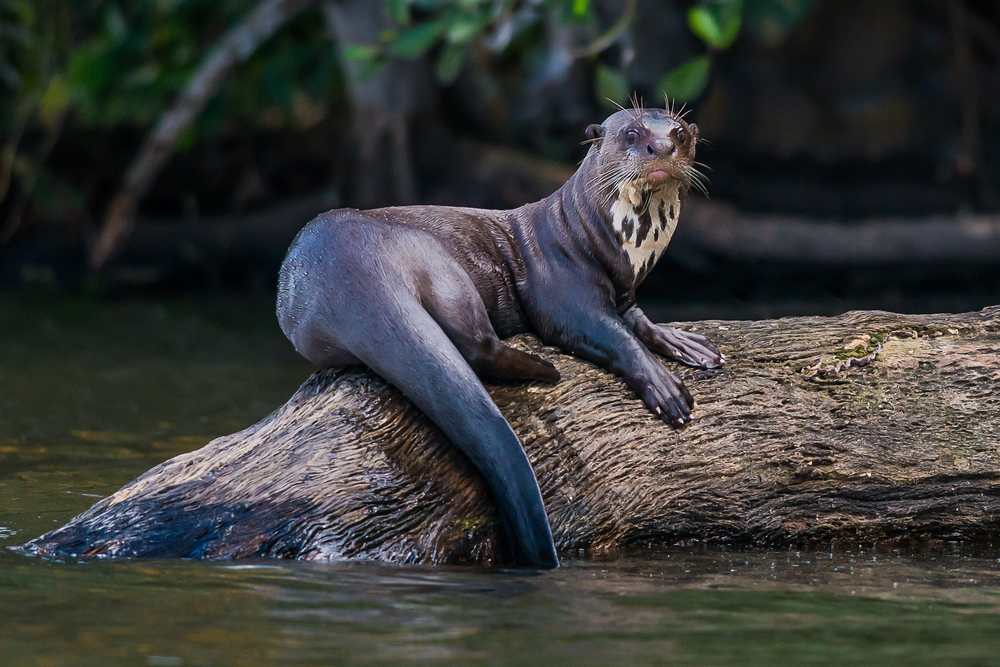
In the winding rivers of the Amazon, the giant river otter moves with playful grace, but don’t let its antics fool you. These social mammals are expert hunters, working in coordinated groups to catch fish and crabs. Their vocalizations keep the group in sync, ensuring effective communication during hunts. If you’re lucky enough to witness a hunt, you’ll be struck by their teamwork and efficiency.
The giant river otter’s presence is crucial for indicating healthy fish populations and overall ecosystem well-being. Research from Conservation Biology highlights the importance of preserving their habitats to ensure the survival of these charismatic creatures. For people living near these rivers, the otters are a beloved part of the landscape, embodying the playful yet fierce spirit of the jungle. Watching them in action is a delightful reminder of the complexity and richness of life in these waters.
13. Red-Bellied Piranha: The Frenzied Feeder
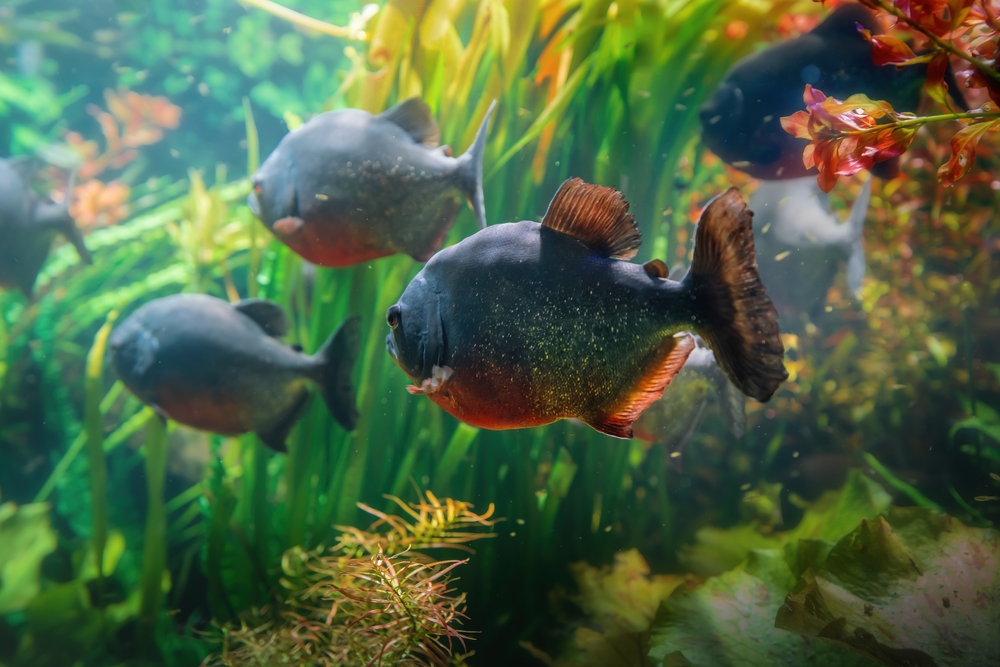
In the Amazon’s swirling currents, the red-bellied piranha swims with purpose, its reputation preceding its every move. Known for their powerful jaws and razor-sharp teeth, these fish can strip flesh quickly when frenzied. However, contrary to popular belief, they are generally timid and often scavenge for food. You might imagine a feeding frenzy, but such occurrences are rare and usually provoked by stress or scarcity.
Piranhas play a vital role in the ecosystem, acting as scavengers that help keep waterways clean and free of debris. Their voracious appetite aids in the decomposition process, contributing to nutrient cycling within their habitat. For those who venture into these waters, the piranha serves as a potent symbol of the jungle’s misunderstood and often exaggerated dangers. Observing them offers a nuanced perspective on the balance of life in these aquatic environments.
14. Clouded Leopard: The Arboreal Predator
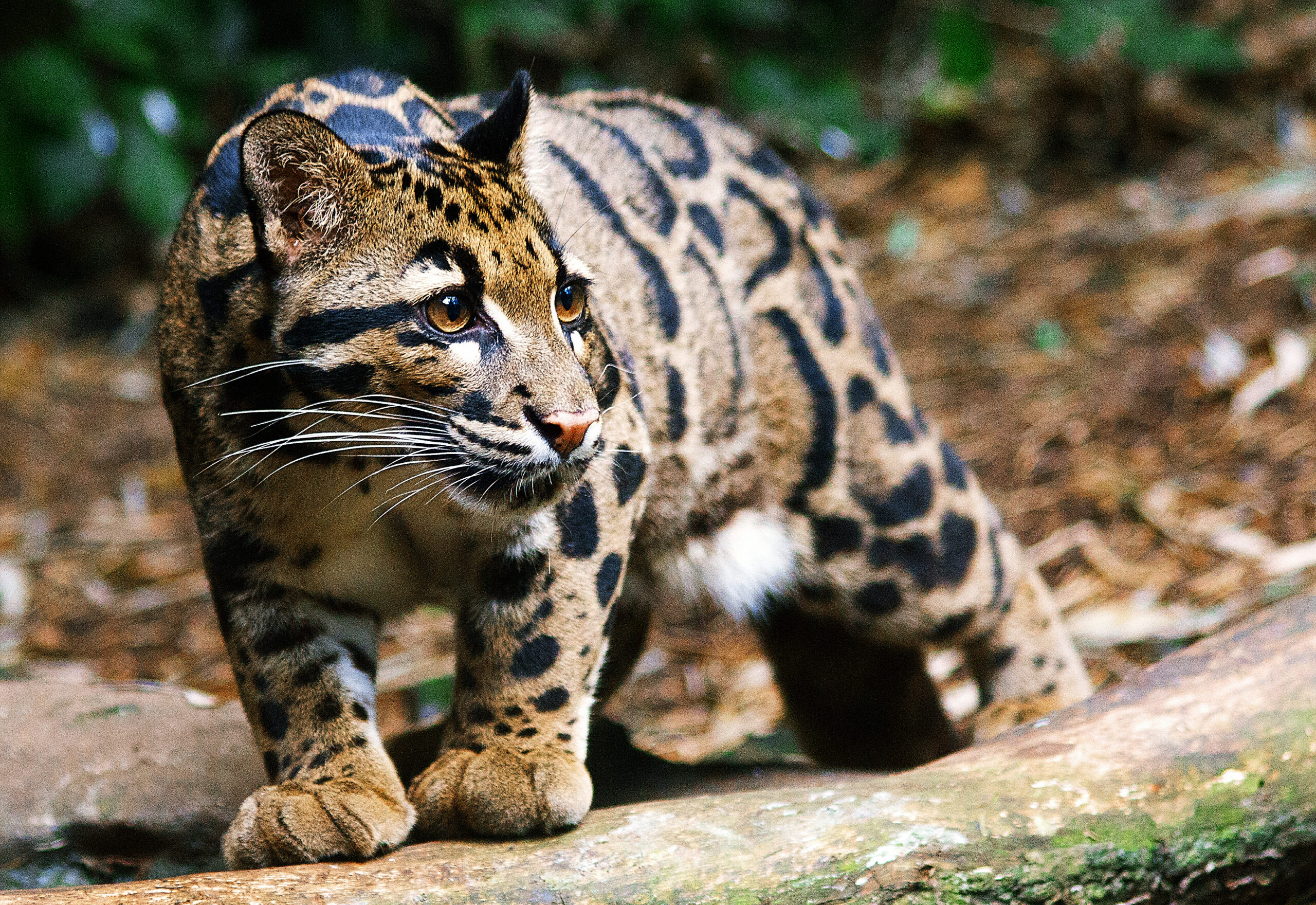
High in the treetops, the clouded leopard moves with quiet assurance, its spotted coat a perfect camouflage against the canopy’s dappled light. With large canines and an impressive tail for balance, this elusive feline is a skilled hunter of both arboreal and terrestrial prey. Its ability to climb headfirst down trees sets it apart from other big cats, giving it a unique advantage in its jungle habitat. If you catch sight of one, you’ll be captivated by its grace and the air of mystery it carries.
The clouded leopard’s solitary nature and arboreal lifestyle make it one of the jungle’s most enigmatic predators. Conservation efforts have focused on preserving its habitat to ensure its continued survival amid deforestation pressures. For those who value the untouched beauty of the jungle, the clouded leopard is a symbol of what is at stake in the fight to protect these ecosystems. Spotting one in its natural home is an unforgettable experience, offering a fleeting glimpse into the secretive world of this remarkable predator.
